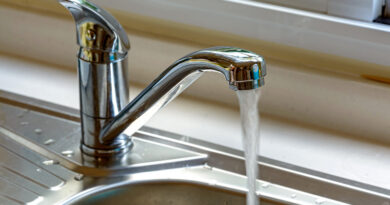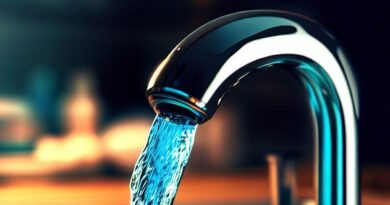Is fluoride in drinking water safe? RFK Jr. says fluoride ‘will disappear’ after election – USA TODAY
- Fluoridated drinking water has come under fire in recent days, targeted by local activists and Cabinet member Robert F. Kennedy Jr.
- Medical consensus says fluoride is harmless at levels found in drinking water and helps prevent tooth decay.
- Opposition to fluoride hinges on claims of toxicity, or that adding it to public water denies the choice to not consume it.
- Most people in Massachusetts drink fluoridated water, though most communities do not add it.
From its place on local meeting agendas to being targeted by Cabinet officials, fluoride has been under the microscope again.
In just over a week, Somerset voters at Special Town Meeting voted to keep fluoridating the town water supply — the fourth such vote in two years, due to citizen’s petitions placed on town meeting warrants urging its removal.
Days later, environmental lawyer Robert F. Kennedy Jr. was confirmed as secretary of the federal Department of Health and Human Services under President Donald Trump. Kennedy, who has long embraced vaccine denial and other medical conspiracy theories, has said he opposes fluoridation of water supplies and that it “will disappear.”
How many people in the SouthCoast are drinking fluoridated water?
Is fluoride in drinking water safe?RFK Jr. says fluoride ‘will disappear’ after election

What is fluoridated water and why is it controversial?
Fluoride is an ion of fluorine, one of the most abundant elements on earth. Fluoride is naturally occurring in the groundwater of water supplies worldwide, at varying levels. It has been added to water supplies across the United States since the early 1950s.
Scientific experts have said fluoride is harmless at levels found in drinking water and helps prevent tooth decay in children. The Centers for Disease Control and Prevention has called the practice of adding fluoride to tap water systems one of the 10 greatest public health achievements of the last century.
The U.S. Public Health Service recommends a level of 0.7 parts per million for public water systems. The World Health Organization has set 1.5 ppm as a guideline value above which fluoride intake is not advised.
Early opponents to water fluoridation alleged it was a “Communist plot to soften the brains of American citizens, to the rumor (circulated widely in Boston) that it is a birth control measure,” according to a UPI article from August 1958.
Modern opposition to water fluoridation ranges from claims that it’s neurotoxic, that excess consumption may lower IQ scores in children, or that adding it to public water denies an individual’s choice to not consume it.

Which communities in the SouthCoast fluoridate their water?
According to 2023 data from the Massachusetts Department of Public Health, the most recent available, 62% of the state’s population has water with added fluoride.
However, out of the state’s 351 communities, most — 221 of them — either do not fluoridate their water supply or don’t have a public water supply.
The following communities add fluoride to their water:
- Acushnet (since 2007)
- Dartmouth (since 2007)
- Fall River (since 1973)
- Freetown (since 1978)
- New Bedford (since 2007)
- Somerset (since 1969)
Another attempt fails:For fourth time, Somerset votes on fluoride in their drinking water

Among other nearby communities, Seekonk has been fluoridating its water the longest, since 1952.
In New Bedford, voters approved a referendum in favor of fluoridation in 1973, but it took the city until 1978 to begin adding fluoride to the water. However, shortly thereafter, anti-fluoride activists pushed a second referendum in 1979, where voters approved ending the practice. After an unsuccessful court challenge, in 1980 New Bedford stopped fluoridating its water.
It resumed after a public health campaign to refluoridate the water began in the early 2000s; a voter referendum in 2006 approved it.
Which SouthCoast communities don’t fluoridate their water?
- Fairhaven
- Marion
- Mattapoisett
- Rochester
- Swansea
- Westport, except for 150 homes and 15 businesses supplied by Fall River water


